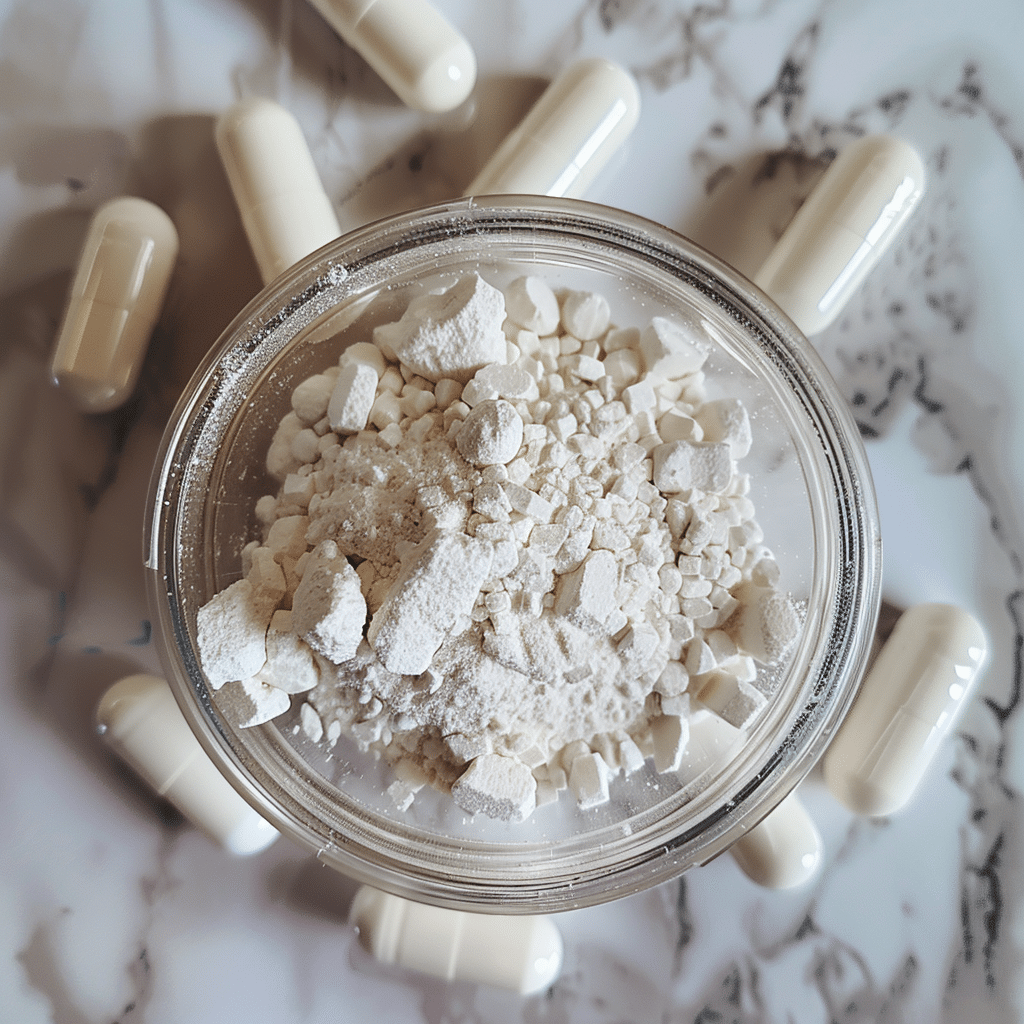
Introduction
When sourcing Vardenafil Hydrochloride (HCl), buyers face two main choices:
- Raw API powder, supplied in bulk (5–25 kg+).
- Finished tablets (e.g., Levitra®, Staxyn®, or generics), distributed through retail pharma channels.
For manufacturers, compounding pharmacies, and distributors, the decision between powder and tablets has major implications for cost, flexibility, compliance, and market positioning. This article compares Vardenafil powder vs tablets, helping B2B buyers make informed procurement decisions.
👉 For a full sourcing roadmap, see the Complete 2025 Buyer’s Guide to Vardenafil HCl Powder.
What is Vardenafil?
- Class: PDE5 inhibitor (same family as Sildenafil and Tadalafil).
- Primary Use: Treatment of erectile dysfunction (ED).
- Dosage (tablets): 5–20 mg taken ~1 hour before sexual activity.
- Powder Form: API used to manufacture tablets, capsules, suspensions, and research formulations.
Vardenafil Powder: Features & Benefits
Advantages
- Cost Efficiency
- Bulk powder costs $350–$500/kg from China, compared to $3–5 per finished 20 mg tablet.
- One kilogram yields ~50,000 tablets (20 mg each), offering significant cost savings for manufacturers.
- Flexibility
- Powder can be micronized to improve solubility.
- Enables development of custom dosage forms: capsules, suspensions, ODTs, or thin-film strips.
- Compounding Use
- Pharmacies in some jurisdictions use powder to create personalized formulations for patients.
Limitations
- Requires GMP-certified facilities for conversion into dosage forms.
- Needs careful storage (2–8°C, moisture/light protection).
- Not directly consumable in raw form.
👉 For lab and formulation use, see Vardenafil Research Powder Applications.
Vardenafil Tablets: Features & Benefits
Advantages
- Convenience
- Ready-to-use, standardized 5–20 mg doses.
- Branded versions (Levitra®, Staxyn®) widely prescribed.
- Regulatory Approval
- Approved in multiple regions for ED treatment.
- Distributed via standard pharmaceutical channels.
Limitations
- Higher unit cost ($3–5 per 20 mg branded pill, $1–2 for generics).
- Only available in fixed dosages.
- Limited flexibility for custom formulations.
- In some regions (e.g., US), insurance coverage restrictions apply.
👉 For sourcing finished formulations, most buyers work with licensed distributors, not API suppliers.
Cost Comparison: Powder vs Tablets
| Form | Unit Cost (Approx.) | Notes |
|---|---|---|
| Powder (bulk) | $350–$500/kg (25+ kg lots) | 1 kg = ~50,000 x 20 mg tablets |
| Powder (small lot) | $650–$850/kg (1–5 kg) | For labs and pilot runs |
| Tablets (branded) | $3–5 per 20 mg tablet | Levitra®, Staxyn® |
| Tablets (generic) | $1–2 per 20 mg tablet | Indian/EU generics |
📊 Takeaway: Powder offers 5–10x lower per-unit cost when scaled into final dosage forms.
👉 For pricing ranges, see Vardenafil Powder Price Trends 2025.
Which is Best for Your Business?
Choose Powder if you are:
- A pharmaceutical manufacturer producing generic ED formulations.
- A distributor supplying compounding pharmacies.
- A research lab developing new dosage forms.
Choose Tablets if you are:
- A retail distributor selling directly to clinics or pharmacies.
- A healthcare provider prescribing fixed dosages.
- An end-user needing convenience and compliance.
Regulatory Considerations
- Powder (API): Requires GMP compliance, COA, MSDS, and in regulated markets → DMF/CEP filings.
- Tablets: Already approved for distribution in EU, Asia, ME; less flexibility, but easier compliance at the retail level.
Conclusion
The choice between Vardenafil powder vs tablets depends on your business model:
- Powder = Best for manufacturers, compounding pharmacies, and labs seeking low cost and flexibility.
- Tablets = Best for retail and clinical channels, offering convenience and regulatory clearance.
📌 Next Steps for Buyers:
- Source raw material
- Scale supply
- Vet GMP factories
- Ensure safety
→ Buy Vardenafil Powder Online
By understanding the advantages and trade-offs, buyers can align Vardenafil sourcing with their market goals and compliance requirements.